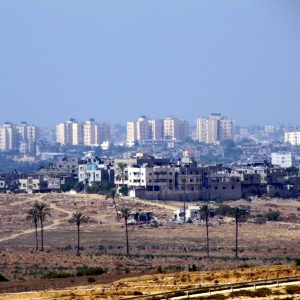The Stream, August 28, 2020: Monsoon Rain Swells the Yamuna River to Dangerous Levels
The Global Rundown
A river in Delhi is reaching dangerously high water levels. Tropical Storm Laura causes death and devastation in the economically depressed Caribbean. A new study finds over half of Antarctica’s ice shelves are at risk of fracturing. A water shortage in Zimbabwe could exacerbate the Covid-19 pandemic. The EPA is awarding almost $3 billion for nationwide water infrastructure improvements in the United States.
“EPA is delivering on its commitment to modernize water infrastructure and improve public health and environmental protections in the Pacific Southwest.” – EPA Pacific Southwest Regional Administrator John Busterud. The Environmental Protection Agency (EPA) is awarding $2.7 billion nationwide to support water infrastructure. The money comes from State Revolving Funds (SRFs), which can be used to treat contaminants in drinking water, improve distribution systems by removing lead service lines and strengthen system resiliency to natural disasters such as floods. WaterWorld
Latest WaterNews from Circle of Blue
Covid-19 Outbreaks In Prisons Underscore Need For Reform – Unsanitary conditions and secrecy contribute to the spread of disease, experts say.
Border Wall Concerns in Lower Rio Grande Valley Diminished By Virus and Growth – US 281 bends west through a Lower Rio Grande Valley landscape renowned in Texas for binding water, agriculture and ecology in a tumult of ferocious urban growth, nationally significant environmental restoration, and political turmoil.
By The Numbers
203.78 meters (668.6 feet) The water level of the river Yamuna at Delhi’s Old Railway Bridge on Wednesday morning, less than one meter from the warning level. The levels are due to high volumes of monsoon rainwater being released from the Hathni Kund Barrage into the Yamuna, although officials believe the water will not reach the warning level unless more water is released from the barrage. If that happens, officials said that preparations are already underway for evacuation operations that keep Covid-19 precautions in mind. Hindustan Times
24 The number of people dead in the Caribbean islands from damage wrought by Tropical Storm Laura. The storm, which has since become a hurricane and made landfall along the U.S. Gulf Coast, hit the region as it was still reeling from the economic impact of coronavirus. Thousands of homes were destroyed, and landslides and swollen river left many roads impassable. Some locals fear this is just a preview of what is to come as hurricane season typically peaks in September. Forecasters have predicted a particularly active hurricane season this year as scientists say they are becoming more intense due to climate change. Reuters
In context: HotSpots H2O: Caribbean Prepares for Hurricane Season That Is Colliding with the Pandemic
Science, Studies, and Reports
A new study found that about 60 percent of Antarctica’s ice shelves are vulnerable to fracture. This could accelerate the loss of the Antarctic ice sheet and increase already-rising sea levels. The study mapped areas where ice shelves hold back upstream ice and are susceptible to “hydrofracture”, where meltwater flows into crevasses and fissures in the ice and enlarges them. The researchers said while hydrofracturing isn’t likely to occur in many areas, global heating could raise the risk for hydrofracturing in the future. Nature
On the Radar
Zimbabweans are facing dual hazards as officials report a water shortage in Zimbabwe’s capital city during the ongoing Covid-19 pandemic. The little water residents can gather is typically done at crowded manually pumped boreholes. Without water, many cannot practice Covid-19 precautions such as handwashing. Recurring droughts and failure to import water chemicals are being blamed for the water shortages, which is likely to worsen as rains are not expected until October. Voice of America
Jane is a Communications Associate for Circle of Blue. She writes The Stream and has covered domestic and international water issues for Circle of Blue. She is a recent graduate of Grand Valley State University, where she studied Multimedia Journalism and Women, Gender and Sexuality Studies. During her time at Grand Valley, she was the host of the Community Service Learning Center podcast Be the Change. Currently based in Grand Rapids, Michigan, Jane enjoys listening to music, reading and spending time outdoors.






Leave a Reply
Want to join the discussion?Feel free to contribute!